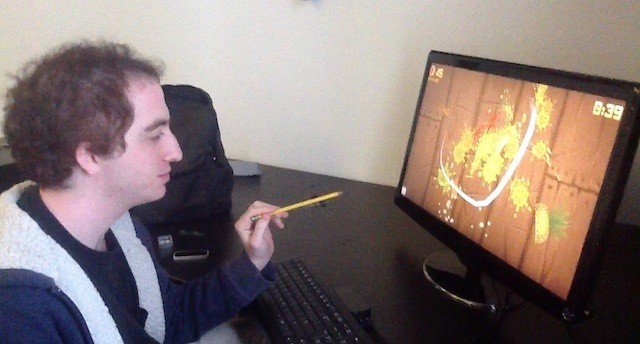Leap Motion‘s worldwide call for developers “to imagine and create the future” has resulted in a virtual stampede of interested parties applying for the Leap SDK, which will allow them to make apps using Leap Motion’s revolutionary 3D motion tracking technology.
Leap Motion is a San Francisco company developing the world’s most powerful and sensitive 3D motion-control and motion-sensing technology. Leap Motion’s first product, the Leap — featured with an exclusive hands-on video demonstration on Cult of Mac last month — will be available in early 2013. The Leap is the first product to let users navigate and interact with computer applications using natural hand and finger movements. Founded in 2010 by Michael Buckwald and David Holz (pictured), the company aims to revolutionize the way we interact with our computers.
The Leap is a phenomenally accurate motion detection technology that can track your individual finger movements down to 1/100th of a millimeter. Using the technology, swipes of the air replace touchscreen gestures. Wired into an unlimited number of apps and operating systems, Leap could completely alter the way we interact with our computers, very soon. And Leap is being made available for software developers to create diverse applications into the next dimension.
The Leap has captured tremendous international attention from developers, with more than 26,000 currently requesting to work with the world’s most accurate 3-D motion-control technology. Developers in more than 140 countries and all 50 U.S. states have applied for one of Leap Motion’s free software development units. Developers in the United States account for 42 percent of the total, with nearly a quarter of U.S. developers based in California.
The remaining requests span the globe, with the United Kingdom, France, Germany, Canada, Brazil, Australia, Italy, Japan, and India requesting the most units.
More than 1500 applications come from researchers and students at colleges and universities, including Harvard University, Massachusetts Institute of Technology, and Stanford University.
During the first seven days following the Leap’s unveiling, developer applications poured in at an average rate of one every minute. Leap Motion received 15,000 developer applications within the first week.
“Leap Motion is committed to radically changing the way people interact with computers, and opening Leap up to the creative imagination of the world is essential to truly realizing the potential of this technology,” said Leap Motion CEO and co-founder Michael Buckwald. “We’ve already seen developers propose exciting applications for the Leap that we hadn’t even imagined, and look forward to even more. We can’t wait for Leap users to experience the applications when the product ships in early 2013.”
The most popular application categories for developers are gaming (14 percent), followed by music and video (12 percent), art and design (11 percent), science and medicine (8 percent), robotics (6 percent), Web & social (6 percent), and education (4 percent). More than 90 percent of developers want to sell their applications through the Leap Motion store.
Leap Motion has also received more than 400 proposals for computer-aided design software. Other use ideas from developers include translating sign language, driving a car or airplane, supporting physical rehabilitation and special needs, manipulating photos and videos, creating new art forms, and thousands more.
The huge response to Leap’s clarion call shows just how much interest there is in non-traditional ways of interacting with our laptops and desktops, even as Apple pointedly ignores bringing touchscreens or other input methods to the Mac. It’s just not natural to assume that people will be content to push a mouse around their table or trackpad while others will be controlling their computers with a click of the thumbs — literally.
Leap Motion will begin shipping free developer units in the next few months, and developers with ideas for using the Leap can apply for a unit at https://live.leapmotion.com/developers.html. Consumers can pre-order the Leap for $70 plus shipping and handling at https://live.leapmotion.com/order.html. Leap Motion plans to begin shipping worldwide in early 2013.


